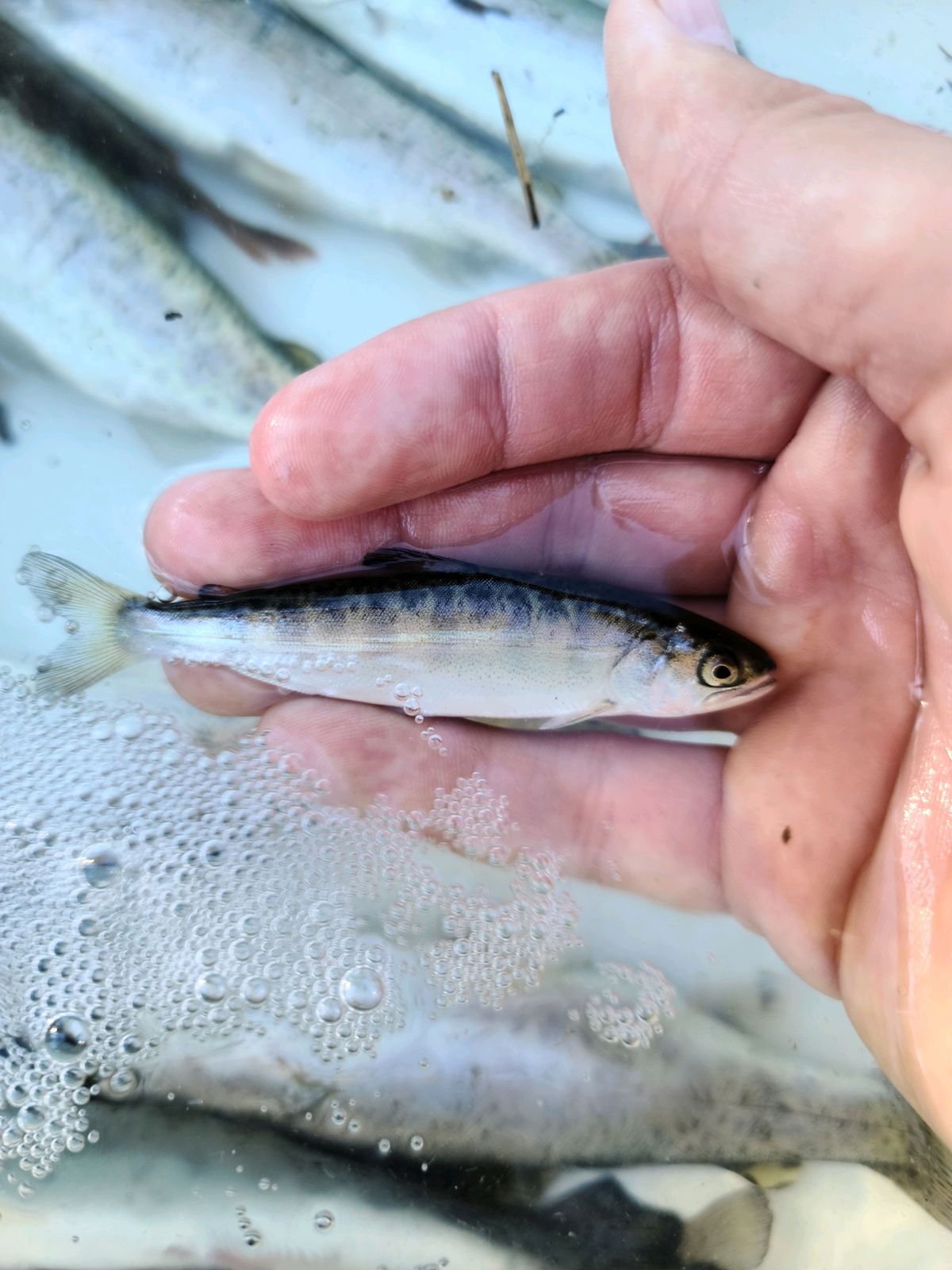Sub-yearling chinook captured in Washington’s Sanpoil River

In the past few weeks, 200 subyearling chinook salmon have been captured in a rotary screw trap located in the Sanpoil River which is upstream of Grand Coulee Dam.
The captures follow the release of adult salmon in 2020.
The screw trap was set by the Colville Tribes’ Fish and Wildlife Department to monitor out-migrating redband trout.
The trap is located near the mouth of the river, close to where the river meets the Lake Roosevelt reservoir.
“We operate the screw trap from May until November and we’ve captured subyearling chinook on their way to Lake Roosevelt,” said Holly McLellan, principal biologist for CTFW in a news release. “The first fish we captured was 93 millimeters long. We PIT tagged it and released it back into the river. The chinook will continue its migration downstream to the ocean. If it survives migrating past Grand Coulee and Chief Joseph dams, then we will be able to detect it as it migrates downstream.”
“It is exciting to document successful salmon reproduction in the Sanpoil River after such a long absence,” said Casey Baldwin, research scientist for CTFW in a news release. “We knew that the adult salmon were effective at spawning last fall, but seeing the juveniles in this spring sampling really proves that the effort to reintroduce salmon has a lot of potential.”
Last August, 100 adult chinook were trapped at Wells Fish Hatchery, tested for pathogens, then transported and released into the Sanpoil River. Each fish was PIT tagged to track their movements. In October, staff walked the stream and counted 36 redds or egg nests that were within about 6 miles of the release sites. The work last fall indicated that the majority of the salmon appeared to have stayed in the area, survived and spawned.
“It is exciting that our fisheries department has identified 70 juveniles that were the result of our cultural releases of salmon in the Columbia and the Sanpoil rivers,” Chairman of the Colville Business Council Rodney Cawston said in a news release. “With the construction of Chief Joseph and Grand Coulee dams, our people were separated from tradition and loss of salmon populations had a large impact on our people. Our people feel they have never intentionally relinquished their rights to the resources and fishing practices that historically have been a significant part of our lives.”
The Colville Confederated Tribes have been working closely with the Upper Columbia United Tribes and the Washington Department of Fish and Wildlife to pursue a phased approach to reintroducing salmon in the blocked areas upstream of Chief Joseph and Grand Coulee dams. Phase 1 is complete and included science and feasibility evaluations.
Phase 2 is being worked on. This phase will include multiple studies to test feasibility and determine the best path forward to continue reintroduction efforts of moving salmon into the blocked areas.